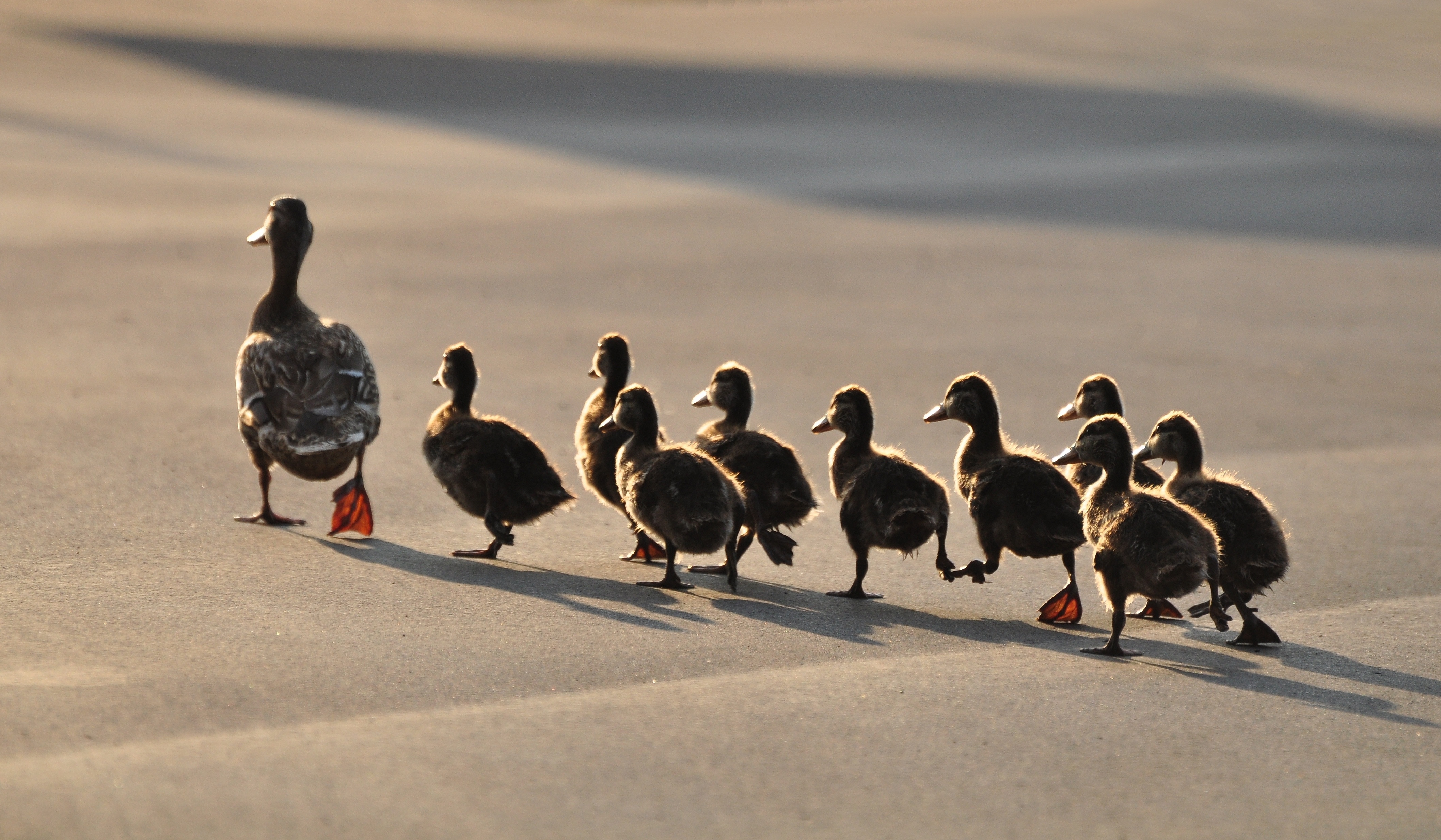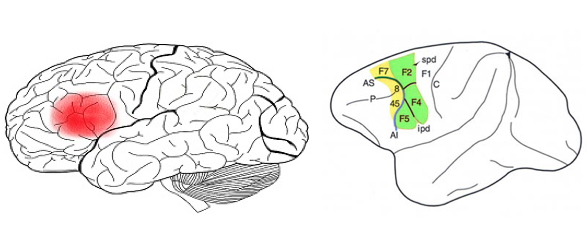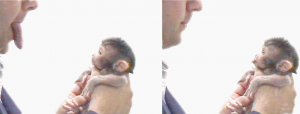2. Gestural Theory
McLane (1996) described gesturing as a means to communicate an experience. While this might encourage a person to speak, there are times where speech just simply cannot be produced, for example, in situations such as taboo topics or situations where the mind does not have words to express what is intended. Based on the research she conducted on trauma patients, McLane suggests that physical and psychological trauma situations are examples in which communication by speech is challenging. As a result, people may turn to gestures as a way of conveying their message.
The theory of language suggests that people use language as an extension of us due to a need to communicate our experiences, in other words, people have the need to share about things that had happened to them (McLane, 1996). This is what supports communication, as people “communicate to hear and to be heard”. As McLane (1996) had mentioned, “We will say our lives in order to have or live our lives” (p. 107). This quote illustrates that in order to experience life, there is a need to express the experiences.
The Gestural Theory states that human language was developed from gestures that were a primitive form of communication, as opposed to the vocal signals that might have been adopted by non-human primates. According to Gillespie-Lynch et al. (2013), bipedalism might be an influencing factor on gesturing, as walking on two feet allows both hands to be available for gesturing. To date, this theory that hypothesizes that gestures preceded speech in human language remains a popular topic of discussion by both evolutionists and linguists. Numerous anatomical and neurophysiological data have supported the stance that human language had evolved from gestural communication (Paget, 1963; Corballis, 2002; Kimura, 1993).
We will be focusing on the Gestural Theory to further our discussion on gestures in the evolution of language.
2.1 Imitating Gestures
Through the years, animals and humans have learned from imitation. This method encourages more efficiency in learning as it bypasses the need for time-consuming trial and error method as a form of learning. This is despite humans making conscious efforts to steer away from this mentality especially when it comes to creating new innovations or starting something new, all of which requires some measure of trial and error. In contrast, a colloquial phrase “Monkey See, Monkey Do” illustrating the imitation of one another in animals is frequently used.
In humans, imitation is most commonly seen among children. A study by Meltzoff & Moore (1977) suggests that infants can do so from the as early as twelve days old, from the mimicking of actions to facial gestures. The research also illustrates that imitation occurs when infants attempt to match what they see (visual input) to their actions (motor output). Another proposed theory is that imitation in children is goal orientated, meaning infants are assumed to react by imitation to a stimulus.
A series of experiments conducted by Bekkering et al. (2000) showed that infants react in the following ways:
- Towards an object – when reaching to touch something
- Towards an agent – when reaching towards an interactive object such as an adult’s fingers
- Towards a movement path – when reaching towards and along in a given direction
- Towards salient features – when reaching towards gestures such as arms crossing.
Similarly, imitation is frequently seen in animals. Although it is less apparent as compared to gestures, animals seem to imitate more in commonly in terms of behavior. Zentall & Akins (2001) speculated in their study that one determining factor for imitation to occur could be the need for social learning among animals. Imprinting is seen as a social learning method that describes how one animal imitates the other. This form of phase-sensitive learning is independent of the consequences of the behavior. One common example is how ducklings follow after their mother duck as they move from one place to another. This form of social learning in animals is also hypothesized by Lorenz (1935) to have a critical period of 13 to 16 hours after hatching, just as language acquisition in humans follow the Critical Age Hypothesis.

Hence, gesturing can be seen through the imitation of actions by both animals and humans, suggesting the presence of an indirect mode of communication that does not require speech.
2.2 Mirror Neurons
Neurophysiological evidence supports the theory that gestural communication serves as the precursor of human language. Fogassi & Ferrari (2014) investigated the motor cortex in monkeys, also known as area F5, where mirror neurons are located. These mirror neurons are activated when an animal executes or observes a goal-related action performed by another. According to Skoyles (2000), mirror neurons are able to explain how signs are produced and interpreted. Mirror neurons are also able to support the emergence of spoken language after the demise of the primitive gesturing systems as a means of communication.
According to research done by Gallese et al. (1996) and Rizzolatti et al. (1996), these visuomotor neurons (mirror neurons) became activated in the area F5 of the brain when monkeys perform hand actions, or when they observe another individual producing a similar action.
There are two categories that depict the connection between mirror neurons and communication.
- Audiovisual mirror neurons becomes activated when monkeys not only observe, but also hear the sound of an action (Kolher et al, 2002)
- For example, a monkey would respond to the sound of a peanut being broken open when the action is either observed, heard, or both. However, a monkey would not respond to the vision or sound of another irrelevant action.
- Mouth mirror neurons become activated when a monkey observes and executes mouth ingestive actions such as biting, sucking, licking etc.
- For example, a monkey would respond and react in the presence of food or in anticipation of food.
The activation of the mirror neurons seems to have a direct correlation to the seen and produced actions. Hence, there is a possible impact on the interpretation of actions by action observation and execution.

Fogassi et al. (2004) suggests that the properties of mirror neurons are part of the basic neural mechanism that associates gestures with meaningful sounds. This also suggests that this pre-adaptation subsequently led to an emergence of speech.
In that case, how do mirror neurons link to the emergence of language in humans?
Skoyles (2000) explains that mirror neurons are found in an area known as area 44, located in the Broca’s area. Broca’s area is a region in the frontal lobe of the left hemisphere of the brain, responsible for language processing and speech production. Both area F5 and Broca’s area were activated during the observation of hand and mouth actions based on demonstrations by brain imaging experiments. With this homology of area 44 near Broca’s area and F5 region (where mirror neurons in monkeys were located), Fogassi & Ferrari (2004) proves the existence of a mirror system for action understanding, just like the activation of mirror neurons in monkeys.

These observations in the cortical region precursor of Broca’s area, area 44, revealed its capacity to execute and understand hand and mouth actions, indicating primitive forms of dyadic communication (Fogassi & Ferrari, 2004). These homologies found based on neurophysiological evidence supports the gestures-first hypothesis – that human language evolved from a gesture performance and understanding system implemented a mirror neurons, allowing language to encompass features such as action-understanding, imitation-learning, and simulation of others’ behaviors as communication evolved over time.
